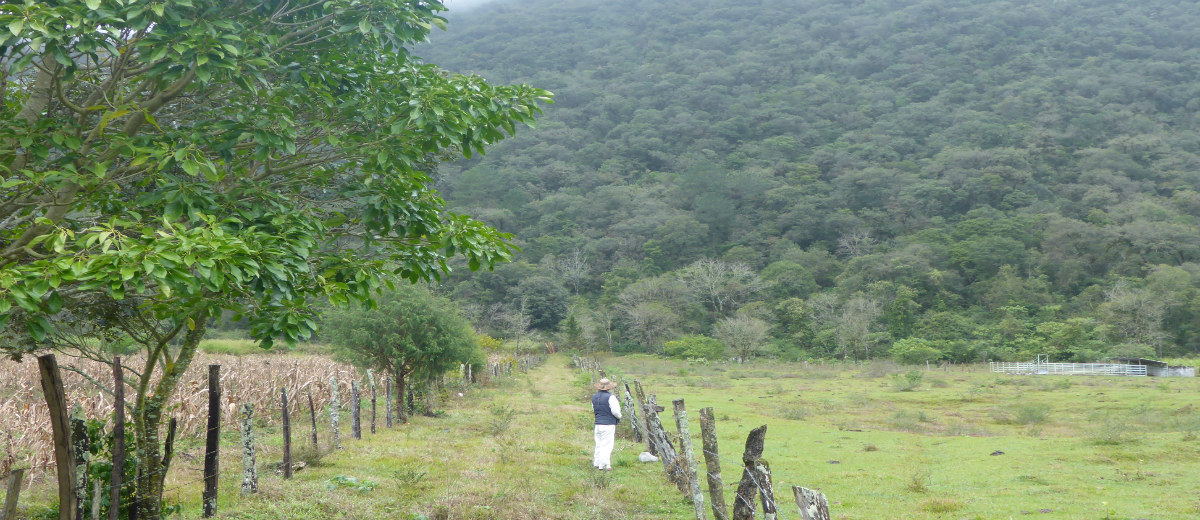
New study explores if institutional fit of the REDD+ mechanism is also a good environmental fit in Mexico, and the associated equity implications. Photo: C. Ituarte-Lima
Bildtext får vara max två rader text. Hela texten ska högerjusteras om den bara ska innehålla fotobyline! Photo: B. Christensen/Azote
Environmental fit
If the environmental shoe fits, who’s wearing it?
New study examines environmental and institutional fit of REDD+ in rural Mexico
- REDD+, a UN tool used for reducing deforestation, can both promote or undermine
different visons of sustainability and equity - Some local communities view REDD+ as beneficial, while others view it as a burden
- Institutional fit has significant influence over environmental fit and influences overall equity
In a world of complexity, how can you actually tell if a solution to a problem is doing its job? Has it created new socio-ecological problems in light of it’s solution?
A new study co-authored by centre researcher Claudia Ituarte-Lima, explores what REDD+, a UN tool which creates financial incentives for reducing emissions from deforestation and degradation, means to different actors in terms of sustainability.
The study explores if the institutional fit of REDD+ is also a good environmental fit, or in other words, whether REDD+ promotes or undermines particular visions of sustainability, and what role this plays in equity among actors.
The study focuses on the operationalization of REDD+ institutions and how broad international norms are articulated through the REDD+ safeguards, including support for human rights and sustainable livelihoods for local communities are translated at multiple levels. To undertake this, the authors use a single ejido, community with a collective land and resource management system in Quintana Roo on Mexico’s Yucatan Peninsula and the multilevel institutional and legal dynamics involved.
While using a single case may seem limiting in REDD+’s worldwide application, Ituarte-Lima explains that: “Our goal is not to predict how REDD+ will unfold worldwide or nationally, but rather to better understand the processes by which diverse institutions mediate local REDD+ outcomes.”
Different perspectives = different values
When defining sustainability in terms of social and environmental benefits of REDD+ carbon payments, the actors in Qunitana Roo have a range of perspectives.
Some actors praise the role of REDD+ in safeguarding indigenous Mayan culture or its role in forest conservation from slash and burn agriculture, while others are skeptical that it will destroy local forest governance.
"Divergent views on how REDD+ or any other intervention that might promote long-term sustainable forest community-management and community welfare clearly point to different directions in terms of what needs to be safeguarded and for whom"
Claudia Ituarte-Lima, co-author
Safeguards implemented by REDD+’s governing actors also vary depending on perspective. While certain safeguards ensure inclusion of some disadvantaged community members, such as indigenous Mayan elders, others are still excluded from decision-making processes, such as many women, youth, and migrants
Even though REDD+ institutions are consistent with some local actor’s perspectives, they are inconsistent with others. Overall, institutional fit shapes REDD+ initiatives, and in turn has substantial influence over environmental fit; each institution highlights certain visions of forest sustainability while undermining others
In other words, depending on your worldview, REDD+ institutions are either a good institutional and environmental fit, or a misfit, and in turn determines your interpretation of what needs to be safeguarded.
REDD+ beyond Quintana Roo
Regardless of which worldview you might hold, the study calls to question whether the present REDD+ programme is functional long term in Quintana Roo. So far, there has been little success in certifying and selling carbon credits, and even if efforts were to persist, there would be no way to forecast success.
While this study provides a detailed, multiscale account of REDD+ and its safeguards in Quintana Roo, the authors caution that it should not be viewed as representative of REDD+ nationally, internationally, or other similar conservation programmes.
Rather, Ituarte-Lima and her co-authors stress that this study instead highlights the importance of grounding discussions about REDD+ safeguarding in local realities.
“Such efforts are critical, if REDD+ safeguards are to empower indigenous peoples and local communities to participate meaningfully in REDD+ in ways that will ensure long-term net environmental and social benefit,” they conclude.
McDermott, C.L., C. Ituarte-Lima. 2016. Safeguarding for what and for whom? The role of institutional fit in shaping REDD+ in Mexico. Ecology and Society 21(1): 9.
Claudia Ituarte-Lima is the leader of the International Environmental Law project at the Stockholm Resilience Centre. Her research focuses on multilevel environmental governance and how the dynamics between local, national and international legal systems support or inhibit equity, sustainable livelihoods and conflict resolution.






